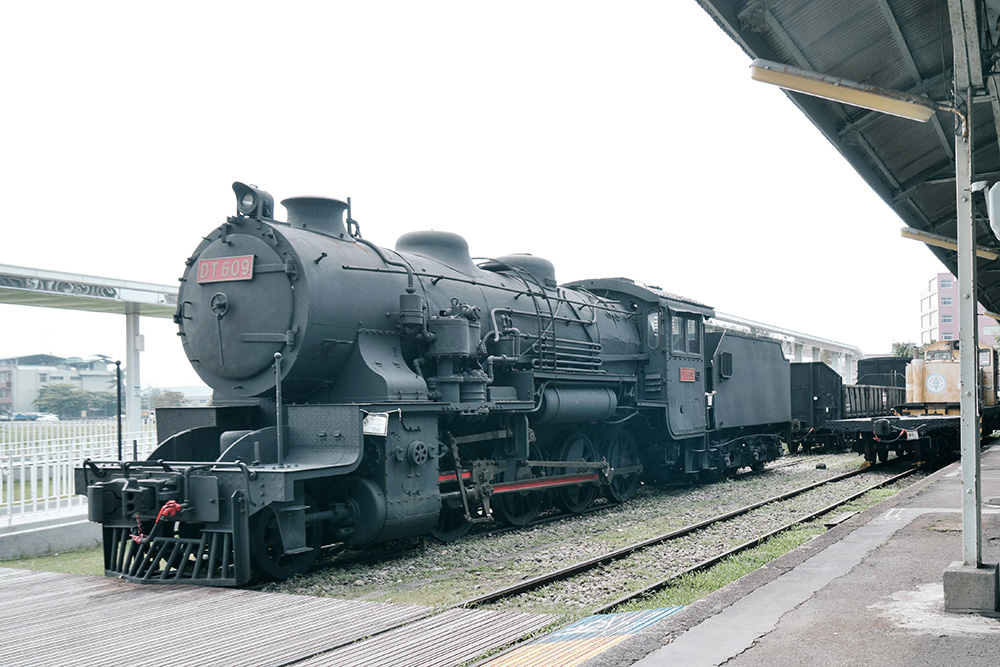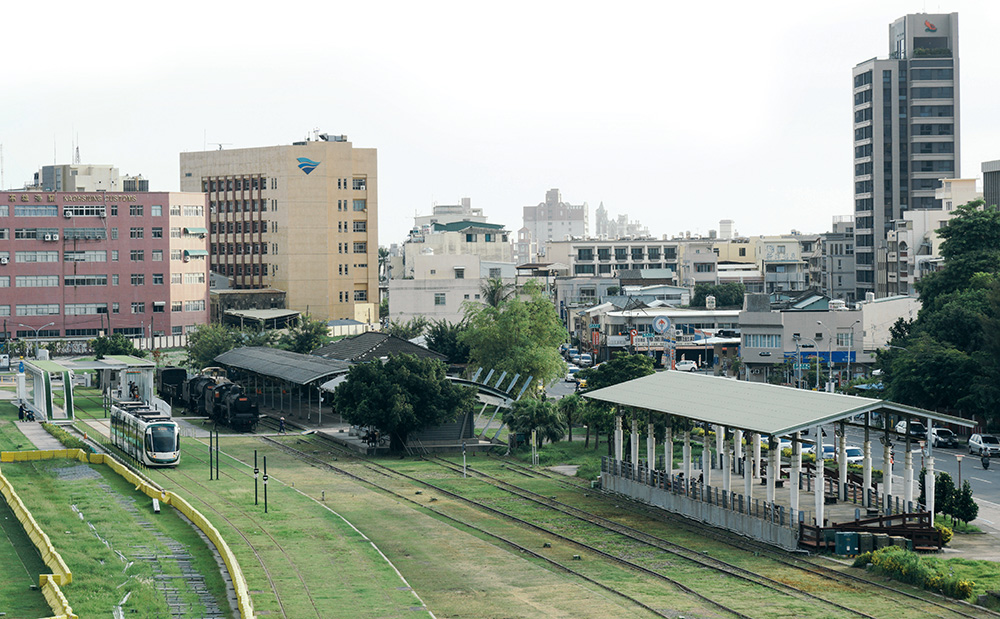Kaohsiung Harbor Railway Line
◎Written by Wargreymon
◎English translation by Hou Ya-ting
◎Photos by Guo Chen-jhih
◎Photos courtesy of Pier-2 Art District
 Today, the Hamasen neighborhood is the southernmost part of Kaohsiung's Gushan District. The area's glamorous past is closely tied to the emergence of modern Kaohsiung. During the 1895-1945 Japanese colonial period, Hamasen was the most prosperous part of the city. At that time, the Hamasen Railway Line ran through the port area, stopping by the local fish market and the port to deliver fresh marine produce. The toponym Hamasen derives from a Japanese term meaning “parallel railway lines.”
Today, the Hamasen neighborhood is the southernmost part of Kaohsiung's Gushan District. The area's glamorous past is closely tied to the emergence of modern Kaohsiung. During the 1895-1945 Japanese colonial period, Hamasen was the most prosperous part of the city. At that time, the Hamasen Railway Line ran through the port area, stopping by the local fish market and the port to deliver fresh marine produce. The toponym Hamasen derives from a Japanese term meaning “parallel railway lines.”
The Harbor Railway Line
After taking control of Taiwan, the Japanese colonial government developed the sugar industry in the southern half of the island. The colonial authorities realized that, if they were to export local sugar to Japan, Takao Harbor Railway Station (Takao, sometime spelled Dagou or Takau, being the original name of Kaohsiung) was not near enough to the port. This prompted the Ministry of Railways to dredge the port and reclaim land nearby. Furthermore, Kaohsiung Harbor Railway Station was relocated to near what is now Takao Railway Museum. The reclaimed land is today's Gushan 1st Road, Linhai 1st Road and Sinbin Wharf in Hamasen. In 1920, Takao Harbor Railway Station was renamed Kaohsiung Harbor Railway Station. Thanks to its railroad and port, Hamasen became south Taiwan's most important hub for both maritime and railway transportation. The modernization of Hamasen is reflected in its urban planning; the streets are laid out in a checkerboard pattern and the neighborhood has economic, political, educational, and cultural facilities. In 1924, the colonial government built Kaohsiung's first city hall on what is now Gubo Street in Hamasen. That site now belongs to Kaohsiung Daitian Temple.
To convey freight from Kaohsiung Harbor Railway Station to what is now Cianjhen District, the colonial Ministry of Railways built the First Harbor Railway Line, crossing Love River, going along the port, through Lingyaliao, and then arriving in Cianjhen District.

As the city's economic center of gravity shifted eastward, the colonial government relocated Kaohsiung City Hall from Hamasen to Yancheng District. That building is now Kaohsiung Museum of History. In addition, Kaohsiung Harbor Railway Station was relocated to today's Kaohsiung Main Railway Station in Sanmin District. After World WarⅡ, the ROC government renovated the station and expanded the harbor, both of which had suffered damage during the war. When the ROC government established Kaohsiung Export Processing Zone in 1966, they also began construction of the Second Harbor Line, including the Jhongdao, Caoya and Siaogang branch lines, along with the ring railroad to the colonial era Harbor Railway Station.
The railroad and port expansion paved the way for Hamasen's modernization. Travelers may be surprised to learn that Kaohsiung Light Rail Transit (LRT), Taiwan's first such system, in part follows the route of the old harbor railway. In fact, the LRT's C14 Hamasen Station occupies the third and fourth rail lines at the old Kaohsiung Harbor Railway Station. Kaohsiung City Government, recognizing the value of Hamasen's history, established the Hamasen Museum of Taiwan Railway in the Penglai B7 and B8 Warehouses at Pier-2 Art Center. The museum combines local railway history with a sense of nostalgia.
Hamasen Museum of Taiwan Railway
Hamasen Museum of Taiwan Railway displays interactive train installations, trams and train engines, and Taiwan's ten most scenic railway stations. Visitors can enjoy a ride on a mini-train which follows a 15-minute route along the Hamasen Pier-2 Line.

Those interested in transportation history should also visit Takao Railway Museum, located on the original site of Kaohsiung Harbor Railway Station. A convenient way to reach Takao Railway Museum is by LRT; when visitors disembark at C14 Hamasen Station they will see the museum right away. Kaohsiung Harbor Railway Station was once the busiest freight station in Taiwan. However, construction of Kaohsiung's rail network prompted Kaohsiung City Government's Bureau of Cultural Affairs to take over the unused Kaohsiung Harbor Railway Station in 2010. The bureau commissioned the Railway Cultural Association to establish Takao Railway Museum. This museum displays various railway relics, such as railroad maps, station furniture, signals, a passenger platform, and a steam locomotive. For elderly Kaohsiung residents, visiting stimulates a sense of nostalgia.
Lighting up 100-Year-Old Rail Track
The Bureau of Cultural Affairs has endeavored to revitalize the old railway tracks at Penglai Pier-2 Art Center's Hundred-Year-Old Railway Park with an LED installation. The five-minute-long light show is presented every half hour from 7 pm to 9:30 pm daily. Spectators are free to walk among the rail tracks, and those who wish to get a panoramic view can go either to the Sky Balcony, a pedestrian overpass, or to the scenic lookout adjacent to the Martyrs' Shrine at Shoushan Nature Park. The LED installation has given this historic place a modern energy.
From 2019/01/22 第11期 KH Style